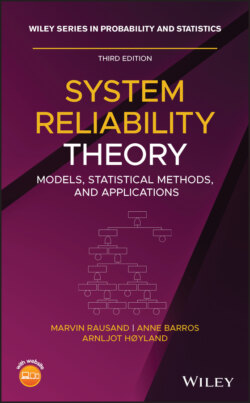Читать книгу System Reliability Theory - Marvin Rausand - Страница 47
1.5.1 The Physical Approach to Reliability
ОглавлениеIn the physical approach, the strength of a technical item is modeled as a random variable . The item is exposed to a load that is also modeled as a random variable. The distributions of the strength and the load at a specific time are shown in Figure 1.5. A failure will occur as soon as the load is higher than the strength. The survival probability of the item is defined as the probability that the strength is greater than the load,
where is the probability of event .
Figure 1.5 Load and the strength distributions at a specified time .
The load may vary with time and be modeled as a time‐dependent variable . The item may deteriorate with time, due to failure mechanisms, such as, corrosion, erosion, and fatigue. The strength of the item will therefore also be a function of time, . A possible realization of and is shown in Figure 1.6. The time‐to‐failure of the item is the (shortest) time until ,
and the survivor probability of the item may be defined as
The physical approach is mainly used for reliability analyses of structural elements, such as beams and bridges. The approach is therefore often called structural reliability analysis (Melchers 1999). A structural element, such as a leg on an offshore platform, may be exposed to loads from waves, current, and wind. The loads may come from different directions, and the load must therefore be modeled as a vector . In the same way, the strength will also depend on the direction and has to be modeled as a vector . The models and the analysis therefore become complicated. The physical approach is not pursued further in this book.
Figure 1.6 Possible realization of the load and the strength of an item.
